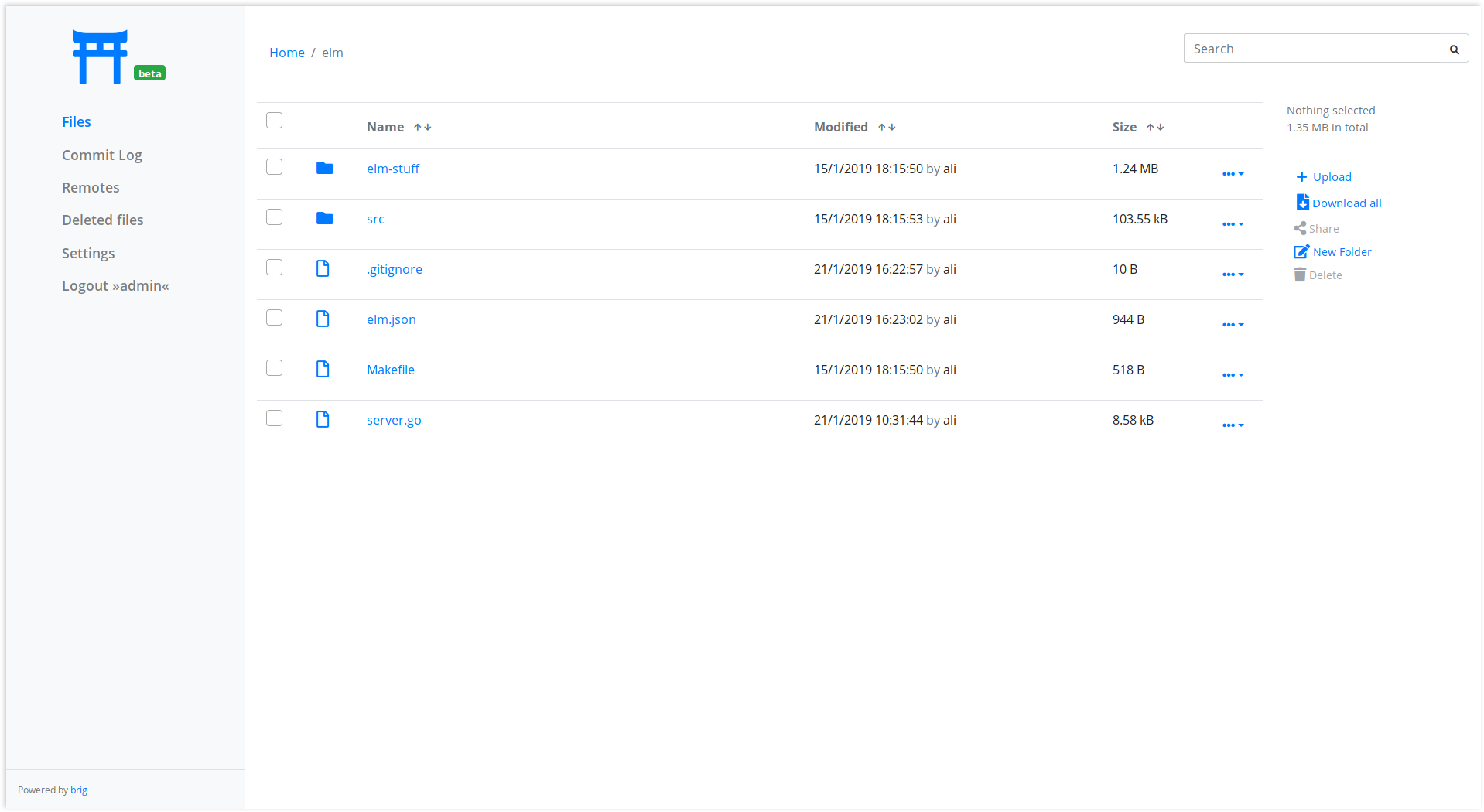Features¶
Note
The featuers below are actually available, but before version 1.0.0 we won’t give any guarantees regarding stability or edge cases. Your mileage may vary currently.
Encrypted and compression built-in¶
- All data is encrypted during storage and transport using AES-256 in GCM mode.
- Optional compression algorithm is selected based on the file type.
- Hints can be given to change the default algorithm for certain or all files.
- Keys are stored as part of the metadata during synchronisation.
Easy Version control¶
- Simplified
git-like version control only limited by your storage space. - Synchronization algorithm that can handle moved files and empty directories and files.
- Auto-updating facility that will sync on any change.
- Configurable conflict handling.
Separation between data and metadata¶
- Your data does not need to be stored on the device you are currently using.
- Pin the data you want to use to your local storage. Every repository acts as cache of all the files you have access to.
- Keep a range of versions cached locally and delete older versions if they exceed a quota.
Truly Distributed¶
- No central server at all. All infrastructure is based on IPFS.
- Still, central architectures can be build with
brig. - Simple user identification and discovery.
- You do not store data you don’t want to store. Pin what you need, fetch the rest from the network on request.
FUSE filesystem¶
- FUSE filesystem mirrors your data to a local directory.
- Allows your normal tools to work seamlessly with brig.
- Mounts can be persisted to stay where they are.
- Not high performance, but fast enough for daily usage.
Gateway and Web UI¶
- Gateway to share normal HTTP/S links with other users.
- Simple UI provided to execute the typical tasks without the need of a command line.
- User and right management included.

100% Open-Source¶
- Completely free software under the terms of the
AGPL. - Development driven by the community.
- Written in Go and Elm.
Comparison with other tools¶
When showing brig (or any other software in general) to someone the first
question is usually something like »But isn’t there already X?« and sometimes
even »Why don’t you just contribute to other projects?«. This section tries
to find an answer to both questions. The answer will obviously be biased, so
take it with a fair grain of salt.
Yes, there is other software in this world. But this is always a matter of
trade offs the author of each individual package has chosen. One application
might not run on your platform, the next might not be secure enough for your
needs, the other one is proprietary or has something else that does not fit
your liking. I won’t go into an exhaustive list of competitors, but more
highlight the things that are special in brig and cannot be done easily in
other systems.
I said »competitors« earlier, which is a silly term, since I don’t see this as
a competition. For me it’s more about giving the user a choice and improving by
adapting good ideas from other implementations. Let’s list a few of those
»competitors« to give you an impression about the place of brig in the
world:
- Syncthing: Probably conceptually the nearest relative. Also a peer-to-peer based filesystem, but with its own protocol. Focus seems to be on ease-of-use and general high quality usability. Does not have strong versioning. Excellent tool and battle tested.
- Resilio: Proprietary solution based on BitTorrent. Seems to focus on performance and enterprise level resilience. Being proprietary is a show stopper for me.
- Perkeep: Not focused on files, but on
storing personal »objects«. Would be probably more interesting as a backend
for
brig. - Upspin: A global name system that glues together
filesystems and other data storage. Could be also a backend for
brigand is not directly targeted to end users. - Bazil: Basically
brigminus IPFS. While apparently discontinued it seems to have a great deal of common features withbrig. The same author also maintains the FUSE bindings of FUSE and his writeups helped me writing the FUSE implementation ofbrig. Thank you very much for your work @tv42! - Git LFS: The large file storage extension to
git. Similar tobrig’s pinning in the sense that large files are replaced with links that will be fetched from a LFS server. - git annex: Extension to
gitthat tracks filenames and metadata instead of file content. Has a great deal of powerful features but can be a bit intimidating to the end users since it does not seem to focus much on usability. Features like the number of minimum copies a file must have before you can delete it are still onbrig’s roadmap.
There are probably more. Some of these inspired quite a bit how brig looks
today. So what are the unique features of brig that you would not get
easily with other tools?
- Pinning: The fact that not all data needs to be on the same machine as the
brigdaemon opens up interesting possibilities. Also the ability of repinning is something I did not see in other tools. - Strong versioning of big files: High level versioning that is comparable
to
git, but simplified and meant for whole-file version control (and not for individual diffs).
Of course there are drawbacks. Choosing brig currently means using software
that is not in widespread use. It did not go through a security audit. It is by
far not as efficient as other tools in all use cases. But many of the current hurdles
are solvable and it’s just a matter of time.
The best advice I can give you: Try it out and see if it fits your use case. If it doesn’t I’m happy to hear from you and wish you all the best with another tool.